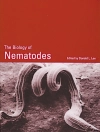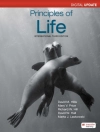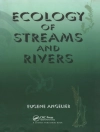Fitness and adaptation are fundamental characteristics of plant and animal species, enabling them to survive in their environment and to adapt to the inevitable changes in this environment. This is true for both the genetic resources of natural ecosystems as well as those used in agricultural production.
Extensive genetic variation exists between varieties/breeds in a species and amongst individuals within breeds. This variation has developed over very long periods of time. A major ongoing challenge is how to best utilize this variation to meet short-term demands whilst also conserving it for longer-term possible use.
Many animal breeding programs have led to increased performance for production traits but this has often been accompanied by reduced fitness. In addition, the global use of genetic resources prompts the question whether introduced genotypes are adapted to local production systems. Understanding the genetic nature of fitness and adaptation will enable us to better manage genetic resources allowing us to make efficient and sustainable decisions for the improvement or breeding of these resources.
This book had an ambitious goal in bringing together a sample of the world’s leading scientists in animal breeding and evolutionary genetics to exchange knowledge to advance our understanding of these vital issues.
Table des matières
Modelling Fitness.- Defining Fitness in Natural and Domesticated Populations.- Genetic Architecture of Reproductive Fitness and its Consequences.- Fitness Traits in Animal Breeding Programs.- Discussion.- Maintaining Fitness.- Maintaining Genetic Variation in Fitness.- Spherical Cows Grazing in Flatland: Constraints to Selection and Adaptation.- Maintaining Fitness by Within Breed Selection.- Discussion.- The Genetic Basis of Adaptation.- Some Evolutionary Consequences of Niche Construction with Genotype-Environment Interaction.- Genotype by Environment Interaction in Farm Animals.- Drosophila and Selection in Nature: From Laboratory Fitness Components to Field Assessments.- Discussion.- Strategies for Managing Diversity.- Strategies to Exploit Genetic Variation While Maintaining Diversity.- Managing Genetic Diversity, Fitness and Adaptation of Farm Animal Genetic Resources.- Livestock Genetic Resources: Preserving Genetic Adaptations for Future Use.- Discussion.- Concluding Summary.- Stuart Barker’s Contributions to Population Genetics and Animal Breeding: Exploring Fitness, Evolution and Animal Genetics.












